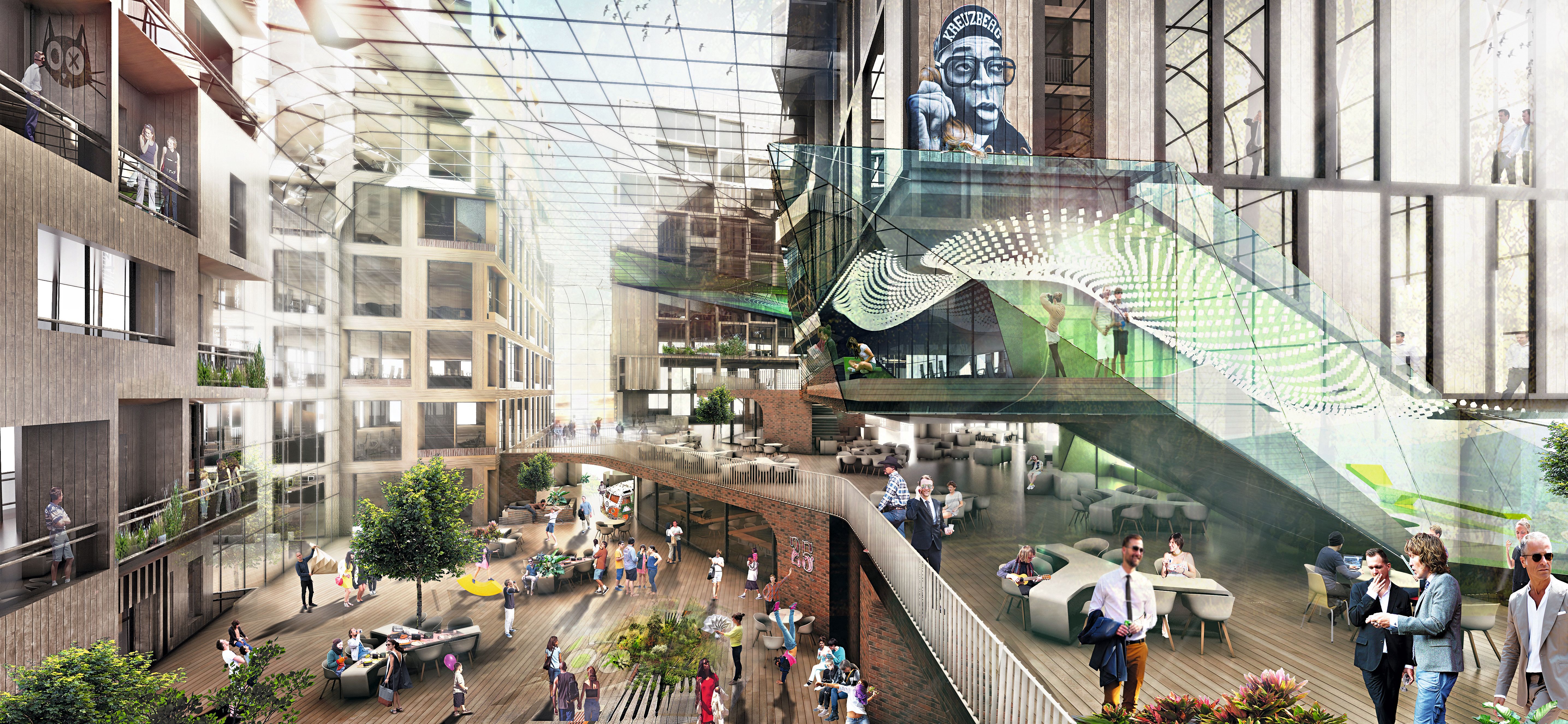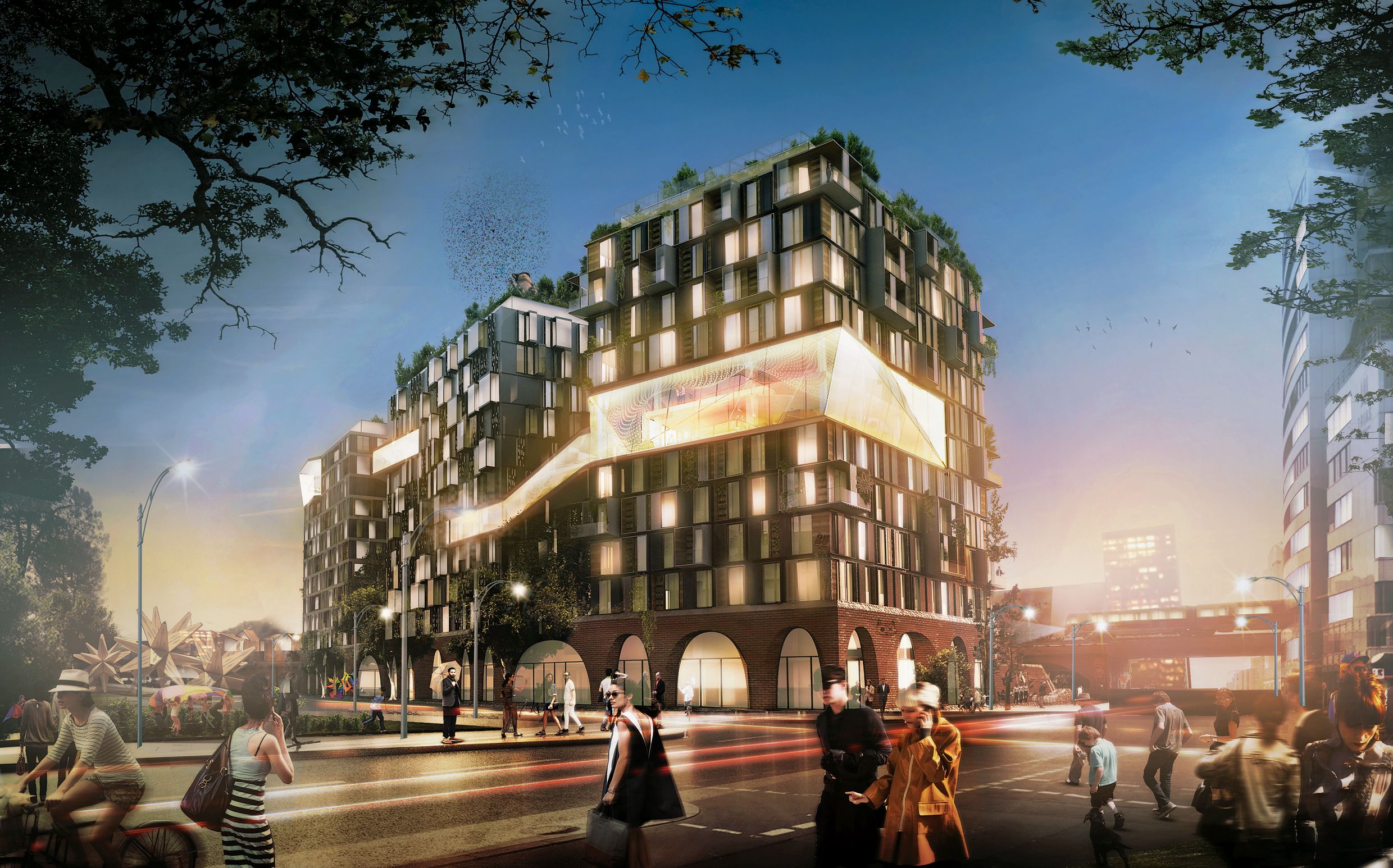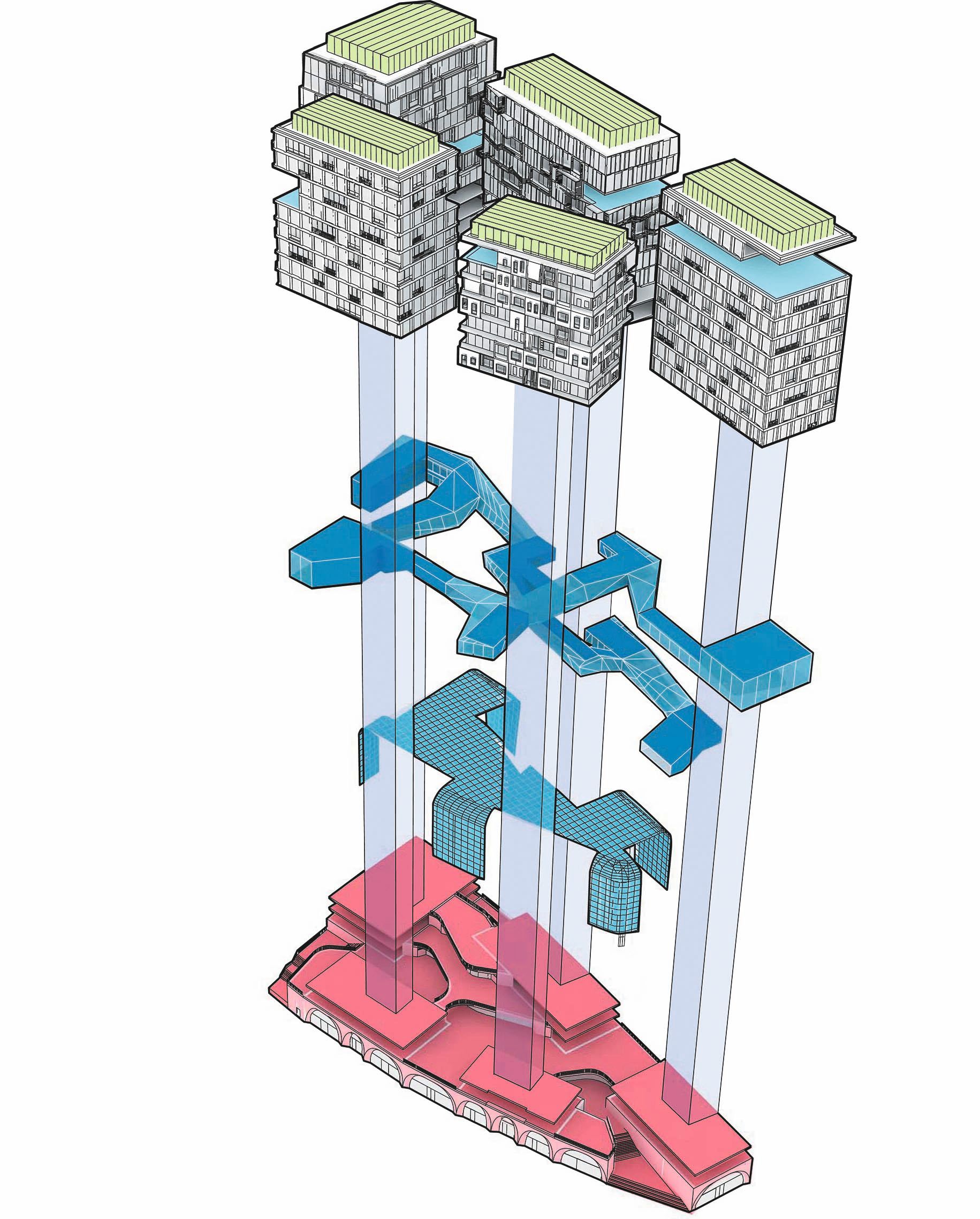

WAF Award 2016, Commercial Mixed Use/ Future Projects, Finalist
Architectural Review Future Projects Award at MIPIM 2015
In collaboration with Kleihues + Kleihues architecture office and the Genossenschaft für urbane Kreativität (Cooperative for Urban Creativity), GRAFT developed the exemplary Eckwerk project, which sought to find solutions to current social, economic and ecological questions. The central idea of the Eckwerk was to create a vibrant, inspiring place that sets new benchmarks for the relationships between work and living and public and private life. The site, located in the northern section of the Holzmarkt area on the River Spree, was home to the legendary Berlin night club Bar 25 until 2011.

Drawing on the characteristic qualities of the location, the Eckwerk takes up features from the surrounding area, making particular reference to the railway viaduct as a defining feature of the site. A central element of its design is a two-story plinth that follows the course of the street on one side and the railway viaduct on the other. The space between the viaduct and the plinth becomes a passage, a place of interaction where public functions and the building’s main entrances are located. The plinth elevates the main level of the complex to the height of the viaduct, and acts as an urban terrace with a view out over the water. On top of the plinth are five independently accessible towers, each providing highly flexible spaces for working or living.
The terraced landscape of the interior space is designed as a publicly accessible, multilevel marketplace and serves as a hybrid indoor–outdoor area, mainly for co-working spaces. Covered by a delicate steel and glass construction, it lets in natural light and can be used all year round.


Breaking up the built volumes into separate towers was not only implemented to fulfil the requirements of Berlin’s zoning laws, it also creates a sense of openness by revealing a variety of views and vistas, dissolving the boundary between the house and the city (the private and the public). With their staggered arrangement, decreasing in scale towards the river, even the towers to the rear are afforded direct views of the Spree.

The five towers are linked by a publicly accessible walkway, the so-called “mountain path,” which connects the ensemble’s component parts and opens into semi-public spaces of interaction and relaxation. The meandering walkway can be accessed by the public without passing through the private work or living areas. It is conceived as a continuation of the Spree riverbank walk, as set out by the citizens’ initiative “Spreeufer für alle” (Spree riverbank for all).

By opening the site and much of the building to the public, it interweaves public circulation into a private development. In contrast to the solid, durable nature of the plinth, the towers embody lightness and variability through their wooden frontage. Wood is both a renewable material and part of the history of the site, formerly home to the riverside timber market.
The floor plans and the facades of the towers both follow a modular design principle, enabling them to be individually modified and adapted.
The Eckwerk project manipulates the natural tendencies of socio-economic change within the urban matrix, proving the viability of creating new working environments and affordable housing in otherwise expensive areas.
Aleksandra Zajko, Alexander Moritz, Alexandra Tobescu, Amit Rivlin, Ana Lopez de Rego Curros, Benedikt Boschert, Christine Huber, Clemens Hochreiter, Felix Götze, Frank Petters, Harpreet Kaur, Julie Hoffmann, Karsten Littau, Kristian Taaksalu, Kudzai Magoche, Marvin Bratke, Matthias Eckardt, Primoz Strazar, Raluca Ana Maria Constantin, René Lotz, Sven-Jacob Bauer